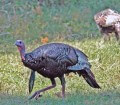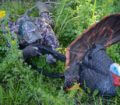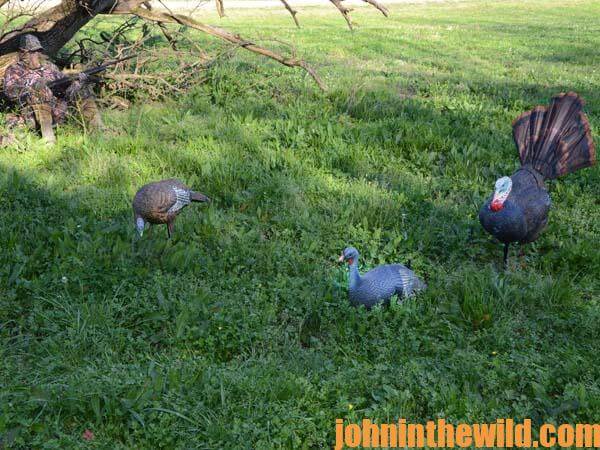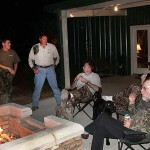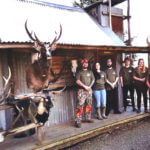John’s Note: At age 16, Preston Pittman of Lucedale, Mississippi, won his first turkey calling championship. When asked how this affected him, he says, “I was a small size growing up, had asthma and chronic nose bleeds and couldn’t compete in most sports. I fell in love with God’s greatest gift, the outdoors. When I won that first contest, it did something to me. I realized I was good at turkey calling.” Today Pittman has won and placed in so many contests that remembering them all is hard, including – the World Turkey Calling Championship, the World Natural Voice Turkey Calling Contest, the World Two Man Team Turkey Calling Contest and numerous others. In 2008, he was inducted into the National Outdoor Hall of Fame. Pittman has hunted across the United States and was the first person to document a Double Grand Slam (two turkeys of each of the four major subspecies of the American wild turkey) in one year. He is on many pro staffs, such as Longleaf Camo (http://www.longleafcamo.com), Muzzy (http://www.muzzy.com), Scent Lok (http://www.scentlok.com) and MOJO Outdoors (http://www.mojooutdoors.com). “I’m just a country boy producing a product (http://www.pittmangamecalls.com) that I believe in and know it works.”
 Preston Pittman is a master of decoys. He likes the Avian X hen decoys (http://www.avian-x.com), and the Flambeau hen decoys (http://www.flambeauoutdoors.com), but he’s really in love with three new decoys introduced lately. As we’ve mentioned earlier, Pittman loves to hunt field turkeys. “When a turkey gets out in the field, and he has his hens with him, he feels comfortable and secure that he can see danger approaching from any direction. If he doesn’t see danger approaching, his hens will. If hens are calling on the edge of the field, he knows. If those hens see him, they should come to him. He doesn’t have to leave his hens to go find another hen. So, the only way to take that gobbler is to crawl to him.”
Preston Pittman is a master of decoys. He likes the Avian X hen decoys (http://www.avian-x.com), and the Flambeau hen decoys (http://www.flambeauoutdoors.com), but he’s really in love with three new decoys introduced lately. As we’ve mentioned earlier, Pittman loves to hunt field turkeys. “When a turkey gets out in the field, and he has his hens with him, he feels comfortable and secure that he can see danger approaching from any direction. If he doesn’t see danger approaching, his hens will. If hens are calling on the edge of the field, he knows. If those hens see him, they should come to him. He doesn’t have to leave his hens to go find another hen. So, the only way to take that gobbler is to crawl to him.”
Pittman doesn’t advise any hunter to crawl to a gobbler on public lands, unless he knows for certain that no one else is on the property. Much of the land he hunts is club land. Each day each hunter signs out for the land where he’s hunting turkeys to prevent any other hunter from coming onto that land. Then he can be confident and secure that no other hunter will mistake him for a turkey when he uses his crawling tactics.
I first saw Pittman crawl on a gobbler when we were hunting Osceola gobblers in Florida. I had bagged a nice longbeard. We walked about 200 yards from where I’d shot the turkey, and Pittman started calling again. We heard two turkeys gobble in a pine thicket that recently had been burned. A small creek that you could hop across was between the turkeys, Pittman and myself. We were so close that we could hear the turkeys giving their fighting purrs, and we could hear their wings flapping as they fought with each other. “You stay right here. I’m going to go shoot me one of those turkeys,” Pittman said. “That ground is so clean,” I told him. “There’s no way you’ll be able to get close enough to those turkeys to get a shot.” “You just watch me,” Pittman explained. “I’m going to crawl to those birds.”
 As I watched, Pittman got down on his belly and crawled close to the ground. I was thinking, “This tactic is never going to work.” I crossed my legs, leaned back against a tree and waited to hear the gobbler fly and/or Pittman shoot. After about 5 minutes, I noticed some movement on the edge of the creek. I was wearing full camo, and I hardly even blinked when I saw a young coon about the size of a half-grown cat come walking down the creek. Finally, that little coon walked right up to me, laid his chin on my boot and stared into my eyes. I’d never had that happen to me before. I looked at the coon, and the coon looked at me. I looked at the coon, and the coon looked at me. After what seemed like 1/2-hour, but was really only about 5 minutes. I heard Pittman’s shotgun report. However, I didn’t hear any turkey wings beating the air to escape, and I knew Pittman was after two gobblers. The little coon ran off at the report of the gun, and I waited anxiously to see if Pittman had bagged his bird.
As I watched, Pittman got down on his belly and crawled close to the ground. I was thinking, “This tactic is never going to work.” I crossed my legs, leaned back against a tree and waited to hear the gobbler fly and/or Pittman shoot. After about 5 minutes, I noticed some movement on the edge of the creek. I was wearing full camo, and I hardly even blinked when I saw a young coon about the size of a half-grown cat come walking down the creek. Finally, that little coon walked right up to me, laid his chin on my boot and stared into my eyes. I’d never had that happen to me before. I looked at the coon, and the coon looked at me. I looked at the coon, and the coon looked at me. After what seemed like 1/2-hour, but was really only about 5 minutes. I heard Pittman’s shotgun report. However, I didn’t hear any turkey wings beating the air to escape, and I knew Pittman was after two gobblers. The little coon ran off at the report of the gun, and I waited anxiously to see if Pittman had bagged his bird.
Coming into a small clearing, before he hopped across the creek, I spotted Pittman. He had a big smile on his face and a big Osceola turkey on his shoulder. “Did you really crawl up on that gobbler?” I asked Pittman. “I crawled up on both gobblers,” Pittman said. “I watched them fight, and the loser of the fight started walking to me. When he was at 30 steps, I shot him.” “How in the world could you crawl across that bare ground and get close enough to take a turkey?” I asked in disbelief. “I can get to a certain distance before a turkey either accepts me or rejects me,” Pittman told me. “I move so slowly that the turkey usually doesn’t spot me moving. If I can get within his comfort zone, and he accepts me, then I usually can get within 20 or 30 yards of him before I take a shot. If the gobbler doesn’t accept me, he’ll walk off when I get within his comfort zone. Those two birds were so busy fighting that they had all their attention on each other. When they stopped fighting, I was within about 40 yards of the two gobblers. As the gobbler that lost started walking away, his main concern was that the big gobbler that had beat him wouldn’t follow him and want to fight some more. So, he didn’t notice me until I rose up slightly to take the shot. Then he stopped, and he met lead.”
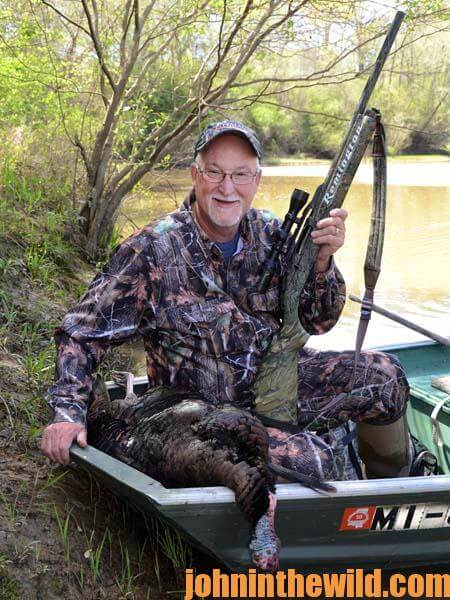 I can give you 100 reasons not to try and crawl up on turkeys, but I also can tell you that I know some seasoned turkey hunters who do crawl on gobblers. Generally, they’re hunting on private lands and know for sure that no one else is in their area.
I can give you 100 reasons not to try and crawl up on turkeys, but I also can tell you that I know some seasoned turkey hunters who do crawl on gobblers. Generally, they’re hunting on private lands and know for sure that no one else is in their area.
You can learn more about Preston Pittman and how he hunts on his Facebook page at https://www.facebook.com/pittmangamecalls/?fref=ts and on his webpage at www.pittmangamecalls.com/
To see John E. Phillips’ Kindle eBook, “How to Hunt Turkeys with World Champion Preston Pittman,” click here at http://amzn.to/144Irn5.
To learn more about turkey hunting from the masters, get these Kindle eBooks and print books by John E. Phillips, including: “The Turkey Hunter’s Bible (available as an eBook or in paperback),” “PhD Gobblers: How to Hunt the Smartest Turkeys in the World,” “Turkey Hunting Tactics,” (also available in an audio book from http://www.audible.com/pd/Self-Development/Turkey-Hunting-Tactics), “The 10 Sins of Turkey Hunting with Preston Pittman” and “Outdoor Life’s Complete Turkey Hunting.” Click here to get these books.
To get John’s book, “The Turkey Gobbler Getter Manual,” for free, go to www.johninthewild.com/free-books to download.

